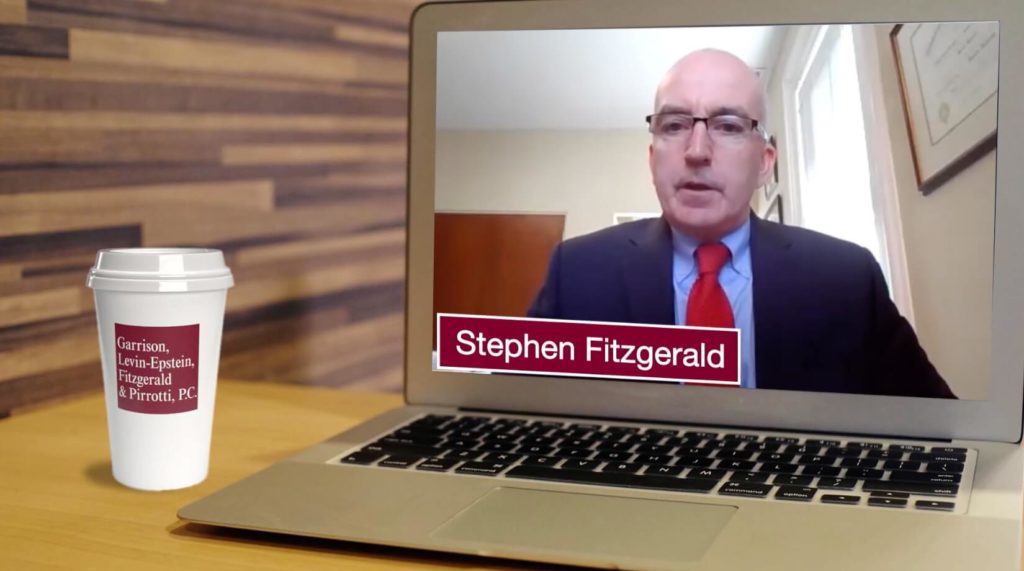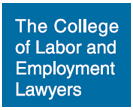Mar 9 2022
Nina Pirrotti: We’re going to talk about severance payments today, and this is something that we deal with all the time at the Garrison law firm. Many of our clients are coming to us to discuss severance at the end of their employment relationship, but some are also approaching us, especially executives, at the beginning of the relationship. Maybe you could just start by telling us in basic terms: What is severance?
Stephen Fitzgerald: Sure, so severance is the term describing the continuation of pay after active employment has come to an end. Severance pay can take the form of continued bi-weekly payroll or a lump sum payment. And an employee becomes eligible for severance after the termination of the employment relationship in any one of three different situations.
So the first situation, some employers have severance plans. These are formal, written benefit plans memorialized in a document that specifically prescribes details such as eligibility requirements and formulas for the amount of the awarded severance. It’s not typical for smaller employers to have severance plans; they tend to be found at your larger employers.
So, if your employer has a severance plan, you’ll probably know about it because your employer will likely promote the plan as part of the collection of benefits available to its employees. If your employer has a severance plan, you should ask for a copy of the plan document, which they are obligated to share with you. And once you take a look at the plan document, you’ll probably be most curious to locate the pages containing the formulas. These are the ingredients in the calculation which determine how much severance the terminated employee has earned. For example: two weeks of pay for every one year of employment.
In the case of a severance plan, an employer’s failure to comply with the plan results in a claim under a complicated body of law known as ERISA. It’s our experience that most employers with severance plans are usually careful to comply with the terms of the plan, and so we don’t see a lot of those ERISA claims here at Garrison.
The second situation in which an employee obtains severance is when the employer awards severance on a discretionary basis; that is, the employer decides on a case-by-case basis while using its discretion whether to award severance to a departing employee and how much to award.
In this situation, there is no plan obligation or, as we’ll talk about in a minute, no contractual obligation to pay severance. So the employee is essentially at the mercy of his former employer’s discretion and goodwill if he or she hopes to get discretionary severance.
Now, here at Garrison, we don’t want to rely on the goodwill of the former employer, do we, Nina?
Pirrotti: No, not at all. We would much rather have the leverage of a legal claim against the employer, which we can use to persuade the employer to pay discretionary severance.
Fitzgerald: Yes, so let’s say our client was terminated under circumstances suggesting age discrimination. After engaging with the attorneys for the employer, we may be willing to have our client sign a document called a release of claims, which releases the employer from liability for age discrimination in return for the commitment to pay severance. This we do a great deal of here at Garrison. However, even when there is no claim, it still may be possible to obtain a discretionary bonus. If it’s not voluntarily offered by the employer, we always encourage our clients to ask because that old piece of wisdom remains true today, right, Nina?
Pirrotti: Yeah, that’s right, Steve. In life, you don’t get if you don’t ask for it.
Fitzgerald: That’s right. So, if you work for an employer with no plan, and they’ve not offered you a discretionary bonus, you should still consider a strategy to ask for severance. And in another vlog recording, we’ll talk about that strategy, including who to ask and how to ask.
So, the third situation is when severance is owed to the departing employee as a result of a contract, an employment agreement. Now employment agreements are typically only available to senior-level executives. Employment agreements are simply not available to all of us. But for those that have the opportunity to negotiate and execute an employment agreement, they are certainly going to want to secure the contractual right to severance upon separation. A well-negotiated employment agreement will include a clause which allows the executive to collect some severance.
These employment agreements are typically drafted by the employer’s attorney, so we strongly advise the executives to get their own counsel to review the severance provisions, and the entire agreement, before signing.
When it comes to the severance clause, we look for a few things. First, we look for the definition of cause to be narrow. Employers will not pay the severance if the executive is terminated for cause. So it’s fair, for example, if the executive is found to have stolen from his employer or fails to show up for work, then that gives rise to a termination for cause and relieves the employer from having to pay the severance called for by the employment agreement.
But putting aside those obvious examples of cause, what we look out for is an overly broad or an unduly vague definition of cause that might allow an employer acting in bad faith to characterize any and all behaviors or merely disappointing business performance as a for-cause termination. So, we try to negotiate a narrow definition that’s limited to obvious and intentional wrongdoing. If the employer insists on a broad or vague definition, we try to build in an obligation to give the executive notice and an opportunity to cure the alleged event of cause.
Second, we want to get a clause in the employment agreement that allows the executive to obtain severance if the employer fails to perform. These are usually called “good reason clauses,” and they typically define what acts or omissions by the employer allow the executive to elect to resign for good reason and then collect the defined severance. An example would be the employer’s act of demoting the executive or failing to pay compensation owed to the executive. These would be events that allow the executive to elect to resign for good reason and then collect severance.
And just as we look carefully at the definition of cause, we also look carefully at the definition of good reason, with an eye toward protecting our clients. A change in corporate control, such as new ownership or a merger, is also something that can trigger an election of good reason to collect severance.
Another important item is coordination with restrictive covenants. Often, employers will include a non-compete or a non-solicit restriction in the employment agreement. These often last for one year or two years after the end of employment and obviously restrict what our clients can do during that time period. We want to protect our clients during the restriction period, and there are two ways to do that.
First, by limiting the scope of the restriction as best we can so it’s less onerous and allows our clients to continue their careers as freely as possible. But the second way is to make sure that our client is paid during the restriction period. So, if our client has to comply with a year-long non-compete, then for that one-year timeframe, we hope that our client is collecting one year’s worth of severance payments. And this way, the former employer is essentially paying for our client to stay on the sidelines.
Finally, we look for clarity in defining the severance benefit called for in the contract. For senior executives in particular, there are often several components to their compensation. If the severance clause only references months of salary continuation, that may result in a disappointing payment because it fails to include compensation items that our client is used to receiving during active employment, such as performance-based bonuses or equity awards. So we try to ensure that the client’s severance compensation equals the compensation she enjoyed before the employment was terminated.
We also want to make sure that benefits continue – health insurance and other benefits that can be continued after the employment has ended. So those are the things we look at when we’re looking at an employment agreement for a senior-level employee.
Pirrotti: Well, thanks, Steve. That was an excellent summary of a very important topic. And contact us here at Garrison if you need help with negotiating severance, either at the beginning or the end of the employment relationship. Until next time.
Posted by Garrison, Levin-Epstein, Fitzgerald & Pirrotti, P.C. in Commentary
Tagged Nina Pirrotti, Severance Agreements, Stephen J. Fitzgerald








